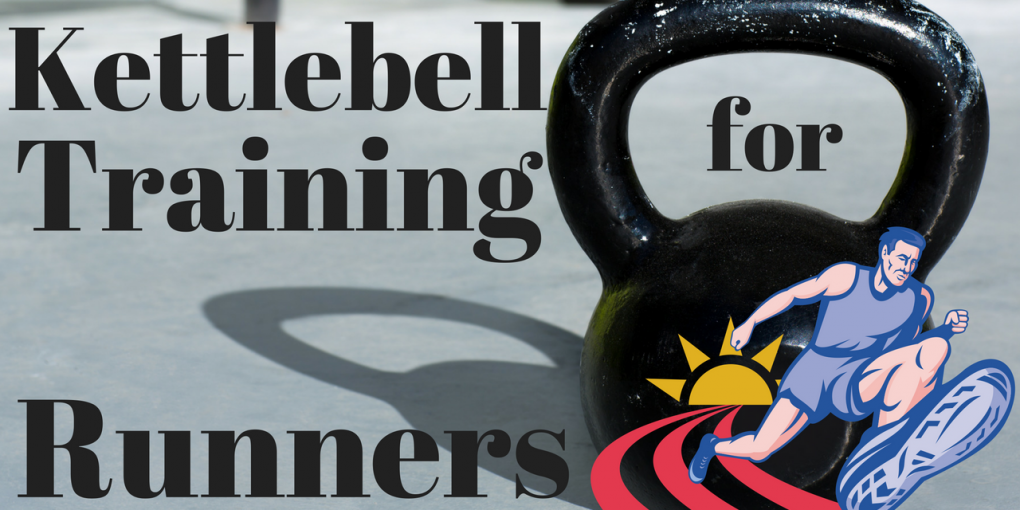Kettlebell Exercises for Runners: How to Swing a Kettlebell
In this article on using a kettlebell for runners:
- how to use kettlebell workouts to improve your running
- how to swing a kettlebell for runners
- how the proper form hard style swing differs from the proper form for the fluid style kettlebell swing
Benefits of Kettlebell Swings
If you want to improve your strength, explosive power, endurance, and breathing, then the kettlebell swing is for you. It is probably the most well-rounded fitness tool in anyone’s toolbox.
If you want to use the kettlebell swing to focus on your strength and explosive power, then the hard style swing is for you. It improves your running performance by increasing your running economy.
Running economy is how fast you can run at a given level of oxygen consumption. Improving the peak power output in your glutes and legs has been shown to improve running economy. So it applies to distance runners as well as sprinters.
If you want to improve your endurance and breathing, then the fluid style kettlebell swing is for you. This style comes from the world of kettlebell sport where competitors have to do as many reps as possible with a given weight in 10 minutes. The fluid style swing is the basis for the kettlebell snatch and kettlebell clean movements that kettlebell sport competitors use.
Risk of Improper Form on Kettlebell Swings
If your form sucks on a Kettlebell Swing, you will get injured eventually. Your neck, shoulders and lower back are at risk unless you use proper technique.
Follow the next few videos to learn all about the various elements of good kettlebell swing technique and then take action and implement what you learn.
Base of Support on Kettlebell Swings
Your base of support is the crucial foundation of good technique. Stand with your feet about shoulder-width apart and place your feet parallel with each other.
Stand on a solid surface with thin-soled shoes. You can also use weightlifting shoes or try barefoot. Never attempt this exercise on an unstable surface unless your goal is to get injured.
Brace Your Abdomen for Kettlebell Swings
There is some controversy in fitness circles about the best way to stabilize your spine while lifting weights.
Whether to brace the abdomen as if someone is about to punch you in the gut, or draw the abdomen in as though you’re trying to put on tight jeans is the question.
Here is my suggestion:
Breathing for Kettlebell Swings
You can choose from two major styles of breathing whenever you swing a kettlebell. Paradoxical breathing is the type of breathing you can use if you choose the hard style kettlebell swing.
The hard style swing involves a very rigid torso while bracing the abdomen. Sniff in hard through your nose as you swing the weight back between your legs. Sharply exhale through your mouth as you change the direction of the swing and thrust your hips powerfully.
This video explains the hard style kettlebell swing:
Anatomical breathing is your preferred method if you choose the fluid style swing. Exhale sharply each time you swing the weight back between your legs.
The fluid style is more effective for increasing your endurance and the hard style is more effective at increasing your strength and power output.
Hip Hinge for the Kettlebell Swing
With each swing, be sure that your body is moving primarily at the hip joints. Your spine remains neutral.
Combining Everything on the Kettlebell Swing
The two most common technique mistakes in the kettlebell swing are the following: swinging too low and letting the kettlbell take pull your weight onto your toes.
The best fix for these two flaws is to stand in front of a wall just beyond your arms reach while standing on top of a kettlebell. (See the video for more.)
Kettlebell Swing Height
You can swing the kettlebell to any height you choose. In Crossfit, the official technique is high and overhead. If you do it this way, it is still best to learn the lower shoulder-height swing and iron out your technique with a lower swing.
The lower swing will allow you to get more reps and work on the mechanics. It’s safer to absorb and return the momentum of a lower swing than a higher swing. The higher swing creates a lot of speed and momentum on the downswing, which you have to absorb and reverse with your body.
And while this is the reason that proponents of the Crossfit style swing feel it is superior to the shoulder height swing, it also makes it more dangerous if you form is not sound.
When your mechanics are sound, then you can swing the kettlebell higher by extending you hips more aggressively on the upswing.
One Hand or Two Hands on the Kettlebell Swing
Both the hard style and fluid style swings can be done with one or two hands holding the kettlebell.
In general, the two-hand grip is best for learning the hard style and the one-hand grip is best for learning the fluid style.
Sources:
Correct Form for Kettlebell Swings
Nick Ortego is a health coach specializing in biohacking for runners. He integrates modern methods with the ancient wisdom of yoga to help runners get the most out of every aspect of life. He is the owner of N 2 Action, a wellness studio in Baton Rouge, Louisiana, offering personal training, health coaching, yoga, and fascial stretch therapy.
Also find more on the Nick Ortego Fitness YouTube Channel

